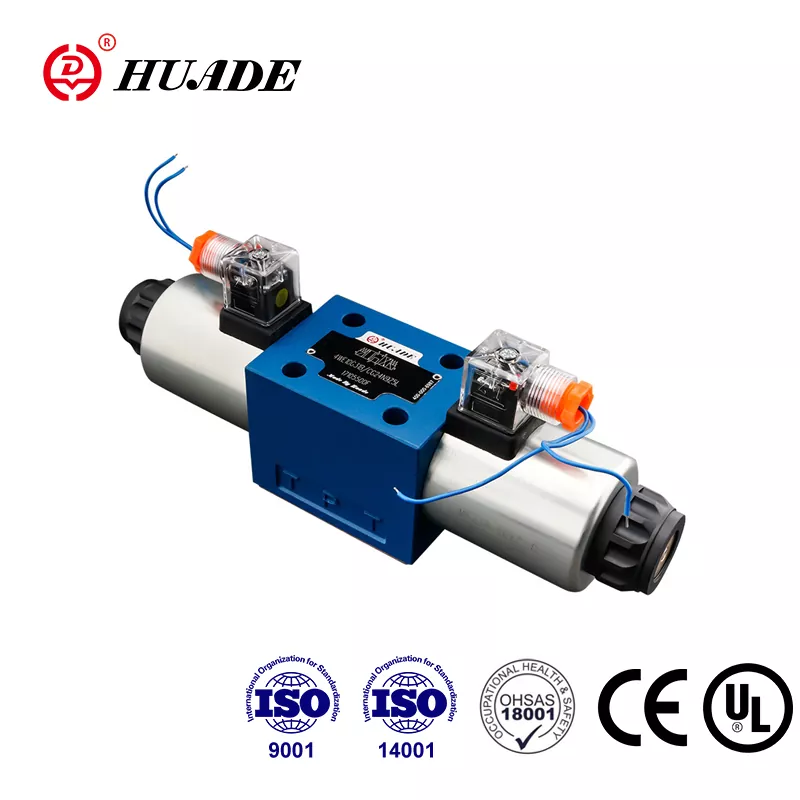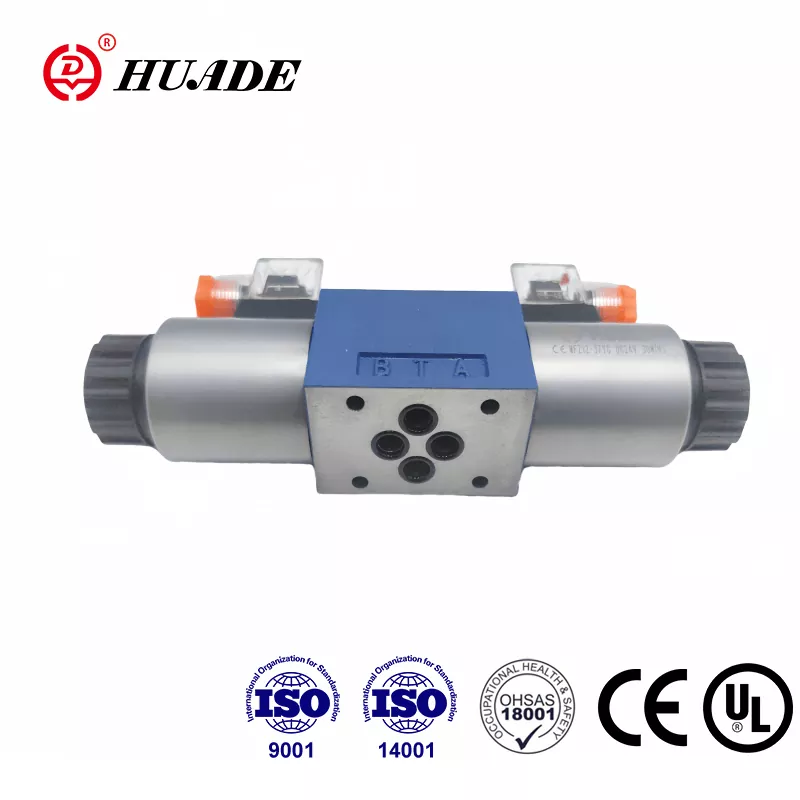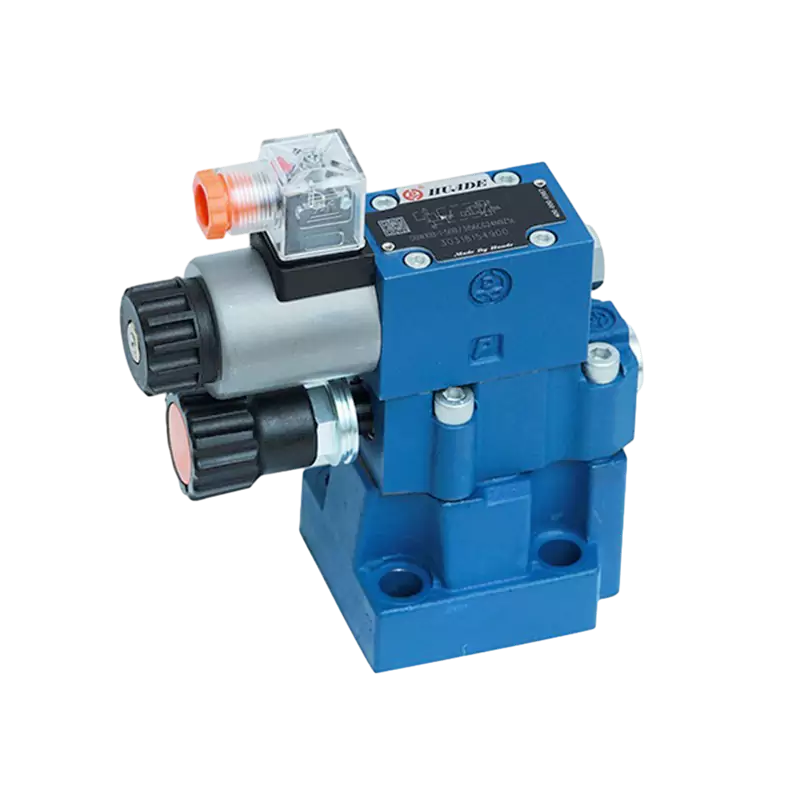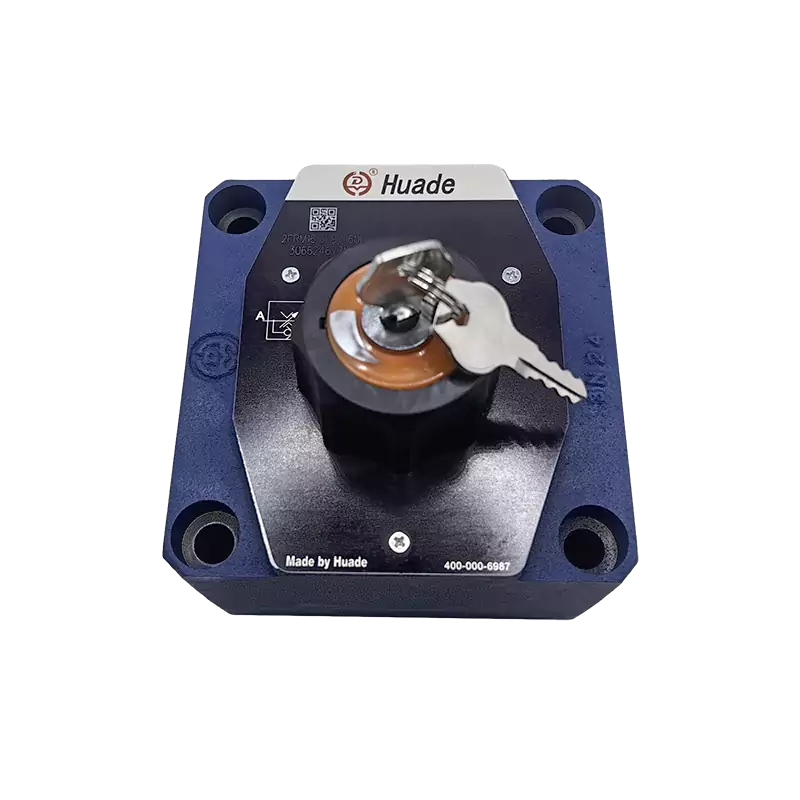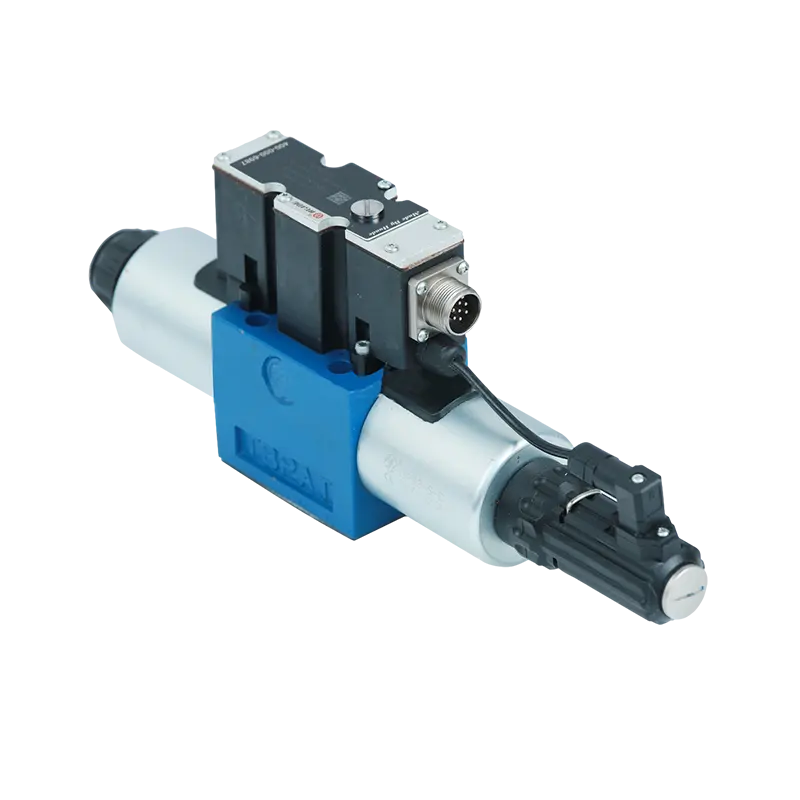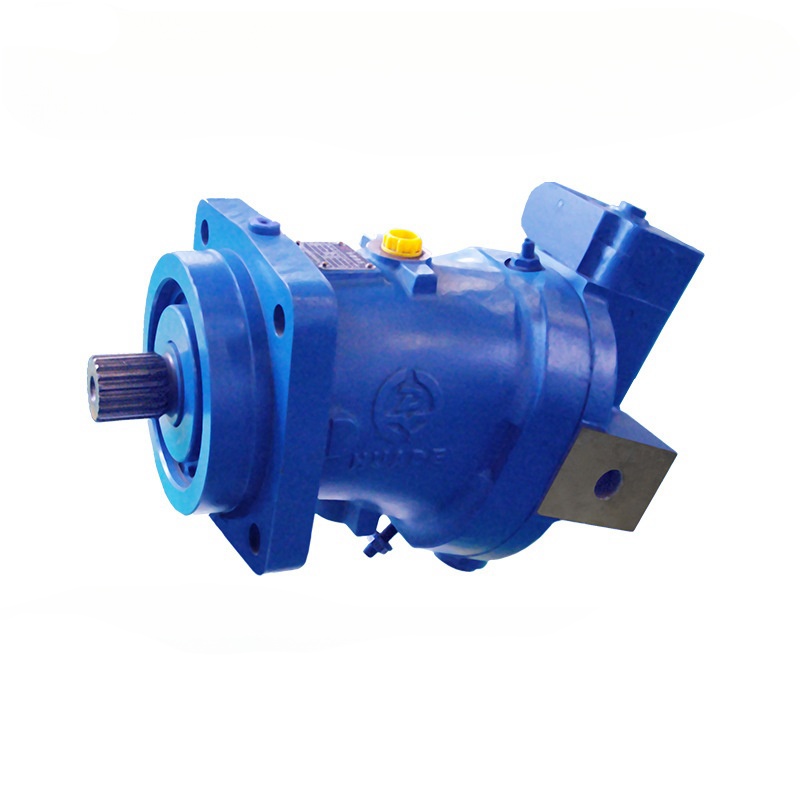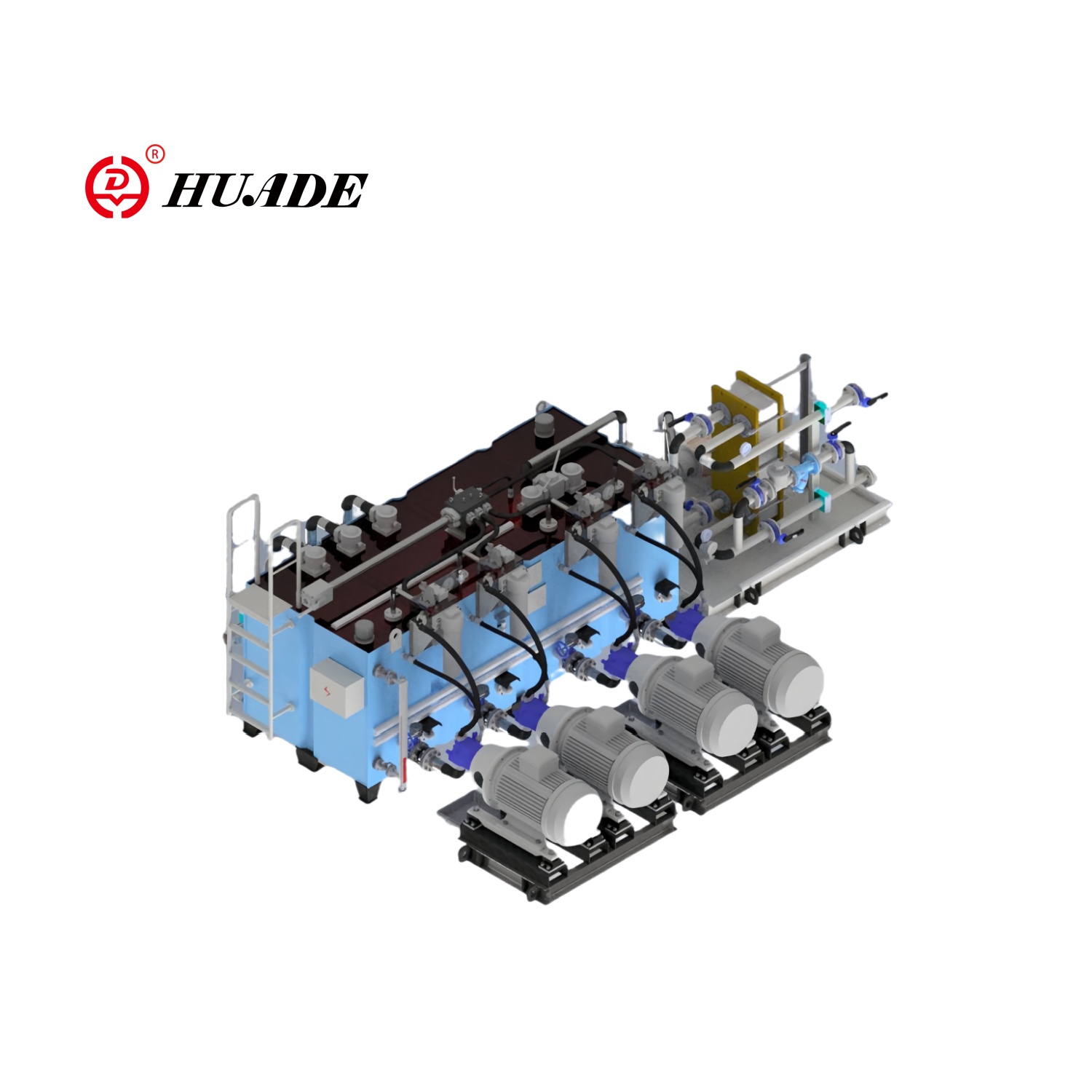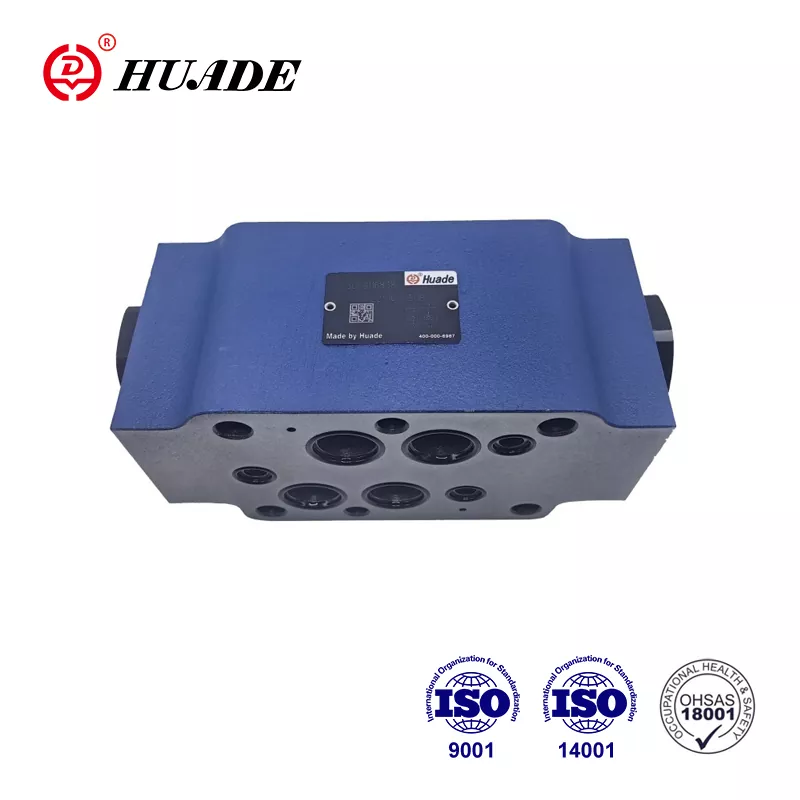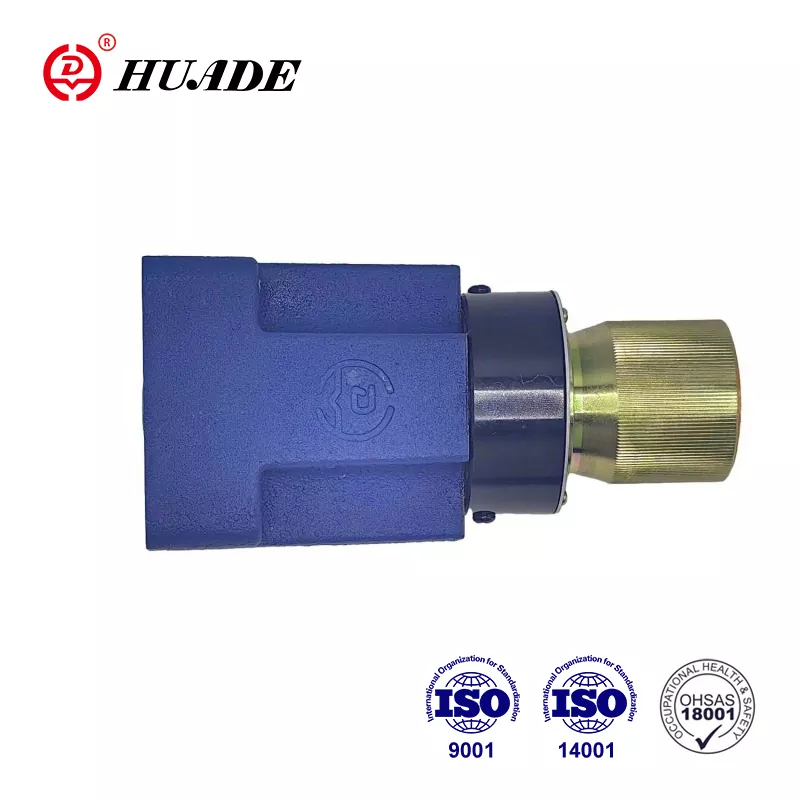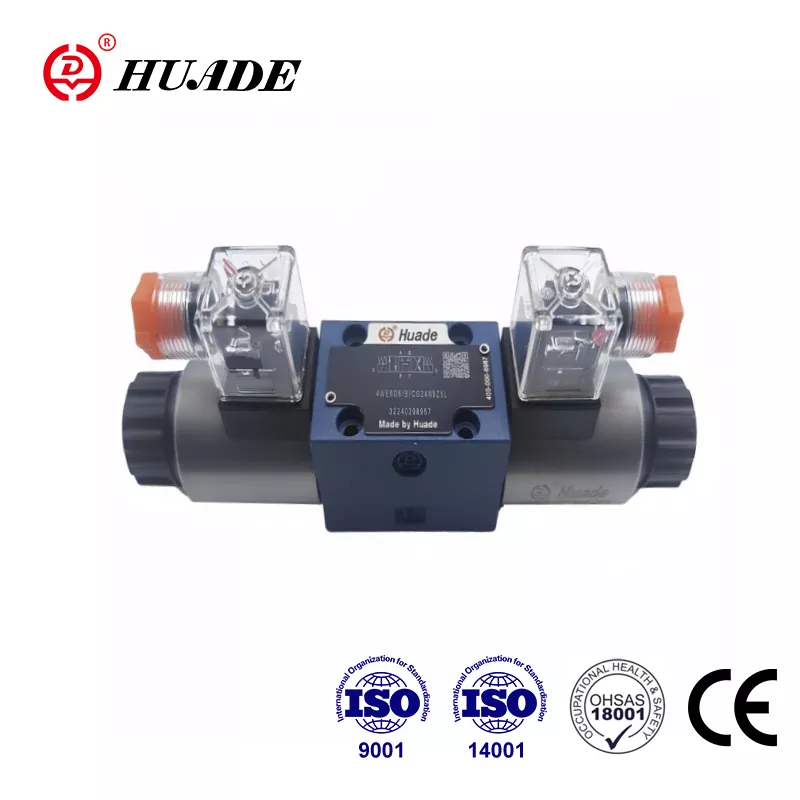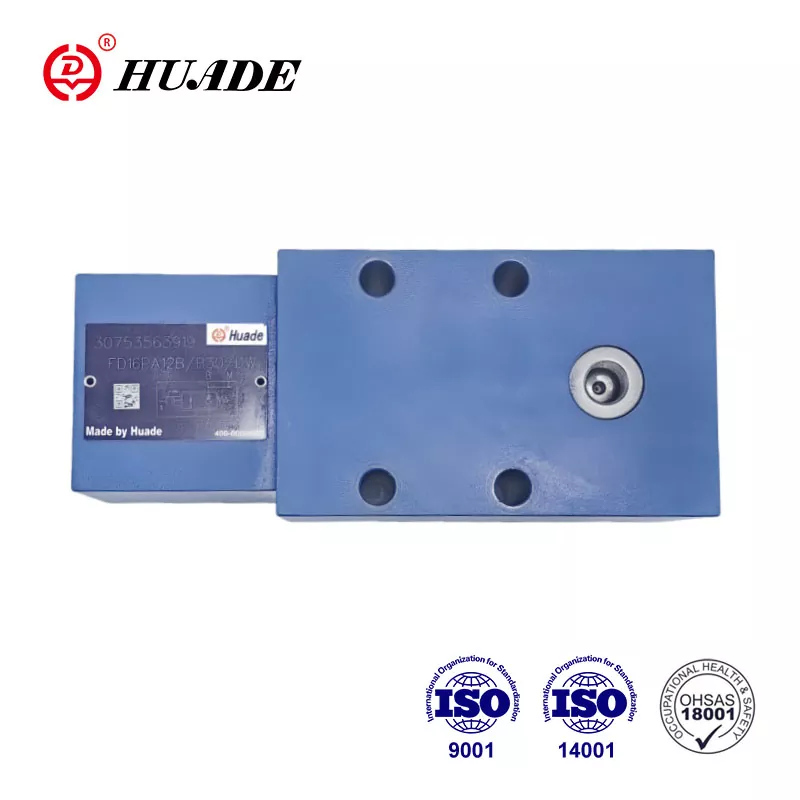When you're working with hydraulic systems, choosing the right directional control valve can make all the difference. The Rexroth 4WE 10 D directional control valve has become a reliable choice for many industrial applications, and there are good reasons why engineers keep coming back to it.
What Makes the 4WE 10 D Special
The Rexroth 4WE 10 D is a solenoid-operated directional control valve that manages how hydraulic fluid flows through a system. Think of it as a traffic controller for oil or other hydraulic fluids. When electricity flows through its coils, the valve shifts position and redirects fluid to different parts of your machinery.
This valve fits the NG10 size standard, which is also called CETOP 5 or ISO 4401-05. What this means in practical terms is that it can handle serious pressure and flow rates while still fitting standard mounting patterns that most hydraulic systems use.
The numbers in its name tell you important information. The "4" means it has four main ports where fluid enters and exits. The "WE" indicates it's a directional valve operated by solenoids. The "10" refers to its nominal size, and the "D" describes a specific spool configuration that determines how the valve behaves when it's in its neutral position.
Pressure and Flow Capabilities
One of the standout features of the directional control valve 4WE 10 D for Rexroth is its ability to handle high pressure. The main working ports can manage up to 350 bar, which equals about 5,076 PSI. That's enough pressure to handle demanding industrial tasks without breaking a sweat.
For flow capacity, this valve can handle between 120 and 160 liters per minute depending on the specific model variant. That's roughly 32 to 42 gallons per minute in American measurements. This range gives you flexibility to match the valve to your system's needs without over-sizing or under-sizing your components.
The return port has a lower pressure limit, typically around 210 bar. This matters because if you're designing a system, you need to make sure your return line doesn't build up too much pressure. Otherwise, you could damage the valve's spring mechanism or stress the housing beyond its design limits.
The Wet-Pin Solenoid Design
The 4WE 10 D uses what's called a wet-pin solenoid design, and this feature deserves some attention. In this setup, the solenoid's push rod sits in hydraulic oil rather than being completely sealed away from it.
This design choice brings several practical benefits. The hydraulic oil acts as a coolant, pulling heat away from the electrical coil. This helps the solenoid last longer and work more reliably, especially when you're cycling the valve frequently. The oil also lubricates the moving parts, which reduces wear and tear over time.
From a maintenance standpoint, wet-pin solenoids are convenient. You can swap out the coil without having to drain the hydraulic system or break into sealed pressure chambers. This saves time during repairs and reduces the chances of contaminating your hydraulic fluid. The coil can even rotate 90 or 360 degrees to fit tight installation spaces, which gives you more options when mounting the valve.
Switching Speed and Damping Control
When you energize the directional control valve 4WE 10 D for Rexroth with DC power, it typically switches in 45 to 70 milliseconds when turning on, and 35 to 45 milliseconds when turning off. These response times work well for most industrial automation needs.
What sets this valve apart from many competitors is its adjustable damping feature. Some versions let you slow down how fast the spool moves when switching positions. By using adjustable throttle screws or fixed orifices, you can extend the switching time to over 100 milliseconds if needed.
Why would you want a slower valve? In systems with large cylinders or heavy loads, instant direction changes can create pressure spikes that hammer through your pipes and fittings. This phenomenon, sometimes called water hammer, can damage components and shorten your system's lifespan. The built-in damping helps smooth out these transitions without needing separate shock suppressors in your piping.
The valve can handle up to 15,000 switching cycles per hour, which makes it suitable for high-speed production lines where the valve needs to open and close repeatedly throughout the day.
Spool Configurations and Operating Logic
The "D" in the 4WE 10 D designation refers to a specific spool symbol, but Rexroth offers this valve platform with many different spool configurations. You can get it in 4/3 configurations (four ports, three positions) or 4/2 setups (four ports, two positions), among other options.
Each spool type creates different flow paths when the valve is in its neutral or center position. Some configurations close all ports when de-energized, which holds cylinders in place. Others connect the pump to the tank, which unloads the pump and saves energy. The choice depends on what you need your system to do when the valve isn't actively switched.
The directional control valve 4WE 10 D for Rexroth comes in both spring-return and detent versions. Spring-return valves automatically go back to a home position when you cut power, which is often important for safety. Detent versions stay in their last position until you send another signal, which works better for applications where you need to hold something in place during power outages.
Electrical Specifications
This valve works with a wide range of electrical systems. You can order it with DC voltages from 12V all the way up to 230V, or with various AC voltage options. The standard DC solenoid consumes around 30 to 35 watts of power.
The electrical connections come in different styles, including plug connectors that meet DIN standards. The valve has an IP65 protection rating, which means it can handle dust and water spray without problems. The insulation meets VDE Class F standards, so it's suitable for industrial environments where electrical safety matters.
For troubleshooting or emergency operation, many versions include manual override options. These let you switch the valve mechanically when you're setting up a system or need to move something during a power failure.
Where This Valve Gets Used
The 4WE 10 D shows up in a lot of different industries because it balances performance with reliability. In marine applications, you'll find it controlling steering systems on ships, managing cranes that load and unload cargo, and adjusting variable-pitch propellers. These environments demand valves that can run continuously in harsh conditions, and the Rexroth design holds up well to salt air and vibration.
Manufacturing facilities use the directional control valve 4WE 10 D for Rexroth in machine tools, injection molding equipment, and metal forming presses. The high switching frequency capability makes it useful for automated production where the valve cycles thousands of times per shift. The damping adjustment helps prevent shock damage to precision components in these machines.
Construction and mobile equipment also rely on this valve platform, though those applications often use slightly different variants optimized for mobile hydraulics.
Maintenance and Fluid Cleanliness
Like most precision hydraulic components, the 4WE 10 D needs clean oil to work properly. The clearances between the spool and valve body are measured in micrometers, and dirt particles can cause wear and internal leakage pretty quickly.
Rexroth specifies that the hydraulic fluid should meet NAS 1638 Class 9 cleanliness standards. You'll need a good filtration system with a beta ratio of at least 75 for 10-micron particles. This might sound overly strict, but when you're running 15,000 cycles per hour, contamination damage adds up fast.
Regular maintenance includes checking the fluid cleanliness, inspecting for leaks, and occasionally replacing seal kits. The seal kits typically contain nine O-rings and come with part numbers like R961006886 for newer series. Because of the wet-pin design, you can often replace the solenoid coil without major disassembly, which keeps downtime short.
Comparing with Other Options
The directional control valve 4WE 10 D for Rexroth competes with valves from Parker, Eaton, and other major manufacturers in the NG10 category. Parker's D3W series offers similar pressure ratings around 345 bar. Eaton's DG4V-5 series also operates in comparable pressure ranges, though specifications vary by model.
What makes the Rexroth option stand out is mainly that integrated damping capability. While other manufacturers make robust and responsive valves, many don't include built-in shock suppression. If you need that feature, you'd have to add external throttles or cushions to your system, which takes up space and adds complexity.
There are also compatible alternatives from companies like Huade that follow the same mounting standards and offer lower prices. These can work well for less critical applications, but you should carefully compare the actual performance specs, especially maximum flow rates and long-term durability data.
Installation Considerations
The 4WE 10 D mounts to a subplate using the standard ISO 4401-05 pattern. The bolt holes are spaced 80 by 32 millimeters apart, which matches the industry standard for this size class. This standardization means you can often swap between different manufacturers' valves without redesigning your manifold or subplate.
When installing the valve, pay attention to the port markings. Port P connects to your pump, ports A and B go to your actuator, and port T returns to the tank. Getting these backwards will make your system operate incorrectly and could damage equipment.
The directional control valve 4WE 10 D for Rexroth can operate in ambient temperatures from negative 15 degrees Celsius up to 70 degrees Celsius. The hydraulic fluid temperature affects switching times because oil viscosity changes with temperature. If your system runs in extreme cold or heat, you might need to account for this in your timing calculations.
Special Variants for Hazardous Areas
For applications in explosive atmospheres, Rexroth offers ATEX-certified versions of this valve. The WE...XE series works in Zone 2 environments where explosive gases or dust might be present but aren't normally expected. The WE...XN series handles Zone 3 conditions with lower explosion risks.
These explosion-proof variants use special coil designs and protective enclosures that prevent ignition sources. If you're working in petrochemical facilities, mining operations, or offshore platforms, you'll need these certified versions to meet safety regulations.
Future-Proofing Your System
As industrial systems become more automated and connected, having diagnostic capabilities becomes more valuable. While the basic 4WE 10 D is a straightforward on-off valve, Rexroth offers an upgraded platform called the 4WEH 10 series that adds position monitoring and electronic stroke adjustment.
These advanced versions use the same proven valve body and spool design as the standard 4WE 10 D, but they include sensors that tell you where the spool is positioned. This feedback helps with predictive maintenance and condition monitoring. If you're building a system that needs to meet Industry 4.0 standards or requires functional safety certification, the 4WEH platform gives you an upgrade path without changing your basic hydraulic circuit design.
Making the Right Choice
The directional control valve 4WE 10 D for Rexroth represents a solid middle ground between performance and practicality. It handles high pressures and flow rates without being over-engineered for simple applications. The wet-pin solenoid design makes maintenance straightforward, and the adjustable damping feature helps protect sensitive systems from hydraulic shock.
When you're specifying this valve, make sure you understand which series you're getting. The 3X and 5X series have some differences in maximum pressure ratings, with newer 5X versions reaching 350 bar compared to 315 bar for some older variants. If you're using high-voltage coils like 96V or 205V DC, remember that you need to reduce the maximum flow by ten percent to avoid overheating the solenoid.
The key to long service life is maintaining proper fluid cleanliness and following the recommended filtration standards. This isn't optional if you want the valve to reach its expected operational lifetime. With good fluid management and periodic seal replacement, these valves can deliver millions of cycles in industrial service.
Whether you're designing a new system or replacing an existing valve, the 4WE 10 D offers proven reliability with enough flexibility to fit many different applications. Its standardized mounting pattern and wide range of spool configurations mean you can usually find a version that matches your needs without custom modifications.
